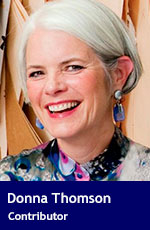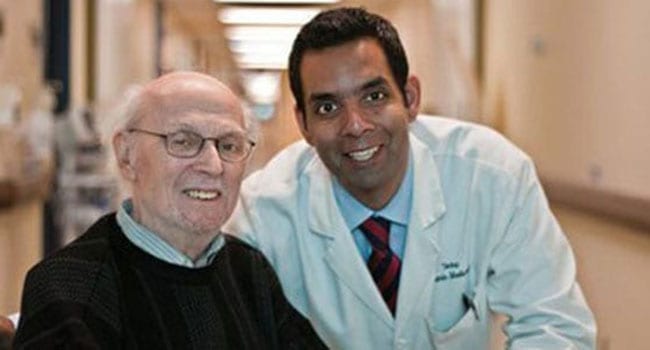 Dr. Samir Sinha is Canada’s guru on aging. We should listen carefully to his ideas because 42 per cent of all hospital patients in our country are over 65 and they account for 60 per cent of all hospital days. Senior patients consume 60 per cent of acute-care budgets and almost half of all health-care spending.
Dr. Samir Sinha is Canada’s guru on aging. We should listen carefully to his ideas because 42 per cent of all hospital patients in our country are over 65 and they account for 60 per cent of all hospital days. Senior patients consume 60 per cent of acute-care budgets and almost half of all health-care spending.
Sinha is the head of geriatrics at Toronto’s Mount Sinai and University Health Network Hospitals and a frequent contributor on issues related to aging on CBC’s The National Politics of Health Care Panel.
Sinha is the creator of a unique approach to hospitalization for seniors – one that’s proven to heal older people more quickly, and put them on a safe and healthy fast track back home. The approach, called Acute Care for Elders (ACE), is being rapidly adopted by hospitals across Canada and beyond.
Enabling people to age at home by returning older patients to their own homes more quickly with fewer complications is the ultimate goal of ACE. Many older patients will be discharged quickly after treatment, but for those admitted, the differences between a traditional hospital ward and an ACE unit are striking. ACE units are designed to care for frail older adults and that eases the burden of care for families.
Uncluttered hallways offer non-slip, low-glare floors and handrails, as well as occasional padded chairs for resting. These design features encourage patients to maintain strength and mobility by keeping active. Large clocks and information boards help keep people oriented. Low beds and easy-access bathrooms promote mobility and reduce the risk of falls.
Quality sleep is a key element of the ACE approach. The Queensway-Carleton Hospital ACE unit in Ottawa has elaborated on the model by creating an overnight HUSH time (Help Us Support Healing). Lights are dimmed and staff phones are set to vibrate. Natural care is supported by flexible visiting hours and family members are welcome to stay overnight.
Most importantly, families are recognized as valued members of the treatment team. Nurses invite calls to check in on a loved one any time of the day or night. This care has led to patient satisfactions rates consistently as high as 99 to 100 per cent over the past year, especially with more older patients able to return home.
Over the next 20 years, the population of Canadians over 65 will double and the number of over 85 will quadruple. The current hospital treatment model makes the frail elderly sicker and more dependent. There’s an urgent need for innovative approaches that lead to better outcomes in primary care for seniors. ACE is designed to treat elderly patients in a way that identifies and respects their abilities and limitations, speeds healing and promotes safe discharges home – all good outcomes for the whole family.
I asked Sinha what he thought would accelerate the growth of ACE units and the broader approach across Canada.
“Transforming our care for older adults and their families begins within our medical and nursing schools,” he said. “Right now in Canada, a rotation in pediatrics is required in our training, but geriatrics remains an option. Given our demographics of aging, I believe every graduating physician and nurse should have experience in geriatrics. That would help change the focus of health care to better serve those who actually use it the most and are amongst the most vulnerable patients in the system.”
Dr. Samir Sinha’s approach to eldercare makes sense for older adults and for natural caregivers. We can all get behind it by asking for an ACE unit and approach in every Canadian hospital.
An aging Canadian population and smaller families, combined with reduced health and social care budgets, mean the challenges of providing care to seniors will only worsen. Legions of families are buckling under the emotional, physical and fiscal burdens of caregiving. These pressures will be exacerbated by growing numbers of people living with demanding health challenges such as dementia, with fewer and fewer people to take care of them. The natural web of caring that so many of us take for granted is at risk of unravelling. Troy Media’s Family Ties examines the issues facing caregivers and the health-care system in general and seeks solutions. If you have a story to tell, contact us at [email protected].
The views, opinions and positions expressed by columnists and contributors are the author’s alone. They do not inherently or expressly reflect the views, opinions and/or positions of our publication.



Hi, although ACE is a proven cost saver and an evidence-based best practice, this model was developed prior to Dr. Sinha adopting it for Canada.
I do know Dr. Sinha, and he is one of the most highly respected geriatricians in Canada, but the ACE Model was developed in 1990 in the U.S. – Cleveland, Ohio to be exact. No disrespect to Dr. Sinha; he is an amazing leader in geriatric care and was the provincial lead for the Ontario’s Seniors Strategy report to govt.
It would be interesting to see an article why this was not adopted in Canada sooner (even though the evidence existed of its excellence), considering the ACE Model is now almost 30 years old.